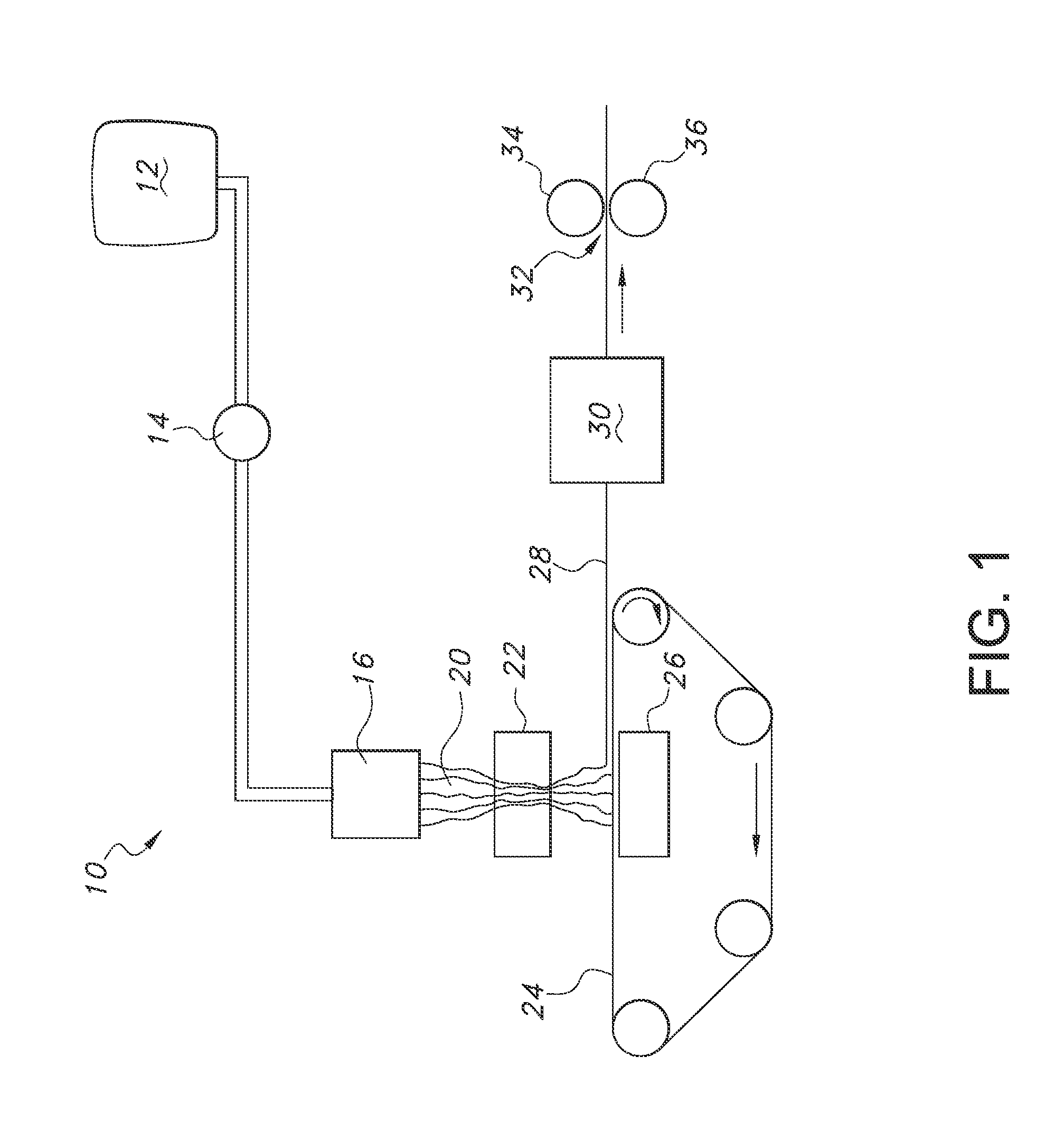Filaments comprising microfibrillar cellulose, fibrous nonwoven webs and process for making the same
a technology of fibrous nonwoven webs and cellulose filaments, which is applied in the field of manufacturing and using cellulose filaments, can solve the problems of constant cost and availability concerns of many material sources such as petroleum-based materials, and the increase of energy costs, so as to reduce the number of steps, reduce the cost of production, and reduce the effect of chemicals
- Summary
- Abstract
- Description
- Claims
- Application Information
AI Technical Summary
Benefits of technology
Problems solved by technology
Method used
Image
Examples
examples
[0049]The MFC concentrate before it is let down is a very thick paste. As a result, water must be added in increasing amounts to the MFC to generate a precursor of suitable viscosity. Once this is done, specified amounts of PEO thickening agent can be added. If need be, additional water can be added during the hand mixing process to yield a precursor dope with suitable viscosity after which the dope can be extruded by hand with the above described syringe. Satisfactory dopes were made at 5.0-7.5 weight percent microfibrillar cellulose and 1.0-2.3 weight percent PEO based on the total weight of all wet and dry ingredients in the dope. Filaments were produced by extruding the dope at room temperature, from a simple syringe, and allowing them to air dry. Filaments so produced were quite strong.
[0050]A total of ten samples of microfibrillar cellulose precursor dope were made and formed into filaments. The data regarding these ten samples are set forth in Table 1 below. Three components ...
PUM
| Property | Measurement | Unit |
|---|---|---|
| dynamic viscosity | aaaaa | aaaaa |
| viscosity | aaaaa | aaaaa |
| weight | aaaaa | aaaaa |
Abstract
Description
Claims
Application Information
 Login to View More
Login to View More - R&D
- Intellectual Property
- Life Sciences
- Materials
- Tech Scout
- Unparalleled Data Quality
- Higher Quality Content
- 60% Fewer Hallucinations
Browse by: Latest US Patents, China's latest patents, Technical Efficacy Thesaurus, Application Domain, Technology Topic, Popular Technical Reports.
© 2025 PatSnap. All rights reserved.Legal|Privacy policy|Modern Slavery Act Transparency Statement|Sitemap|About US| Contact US: help@patsnap.com



